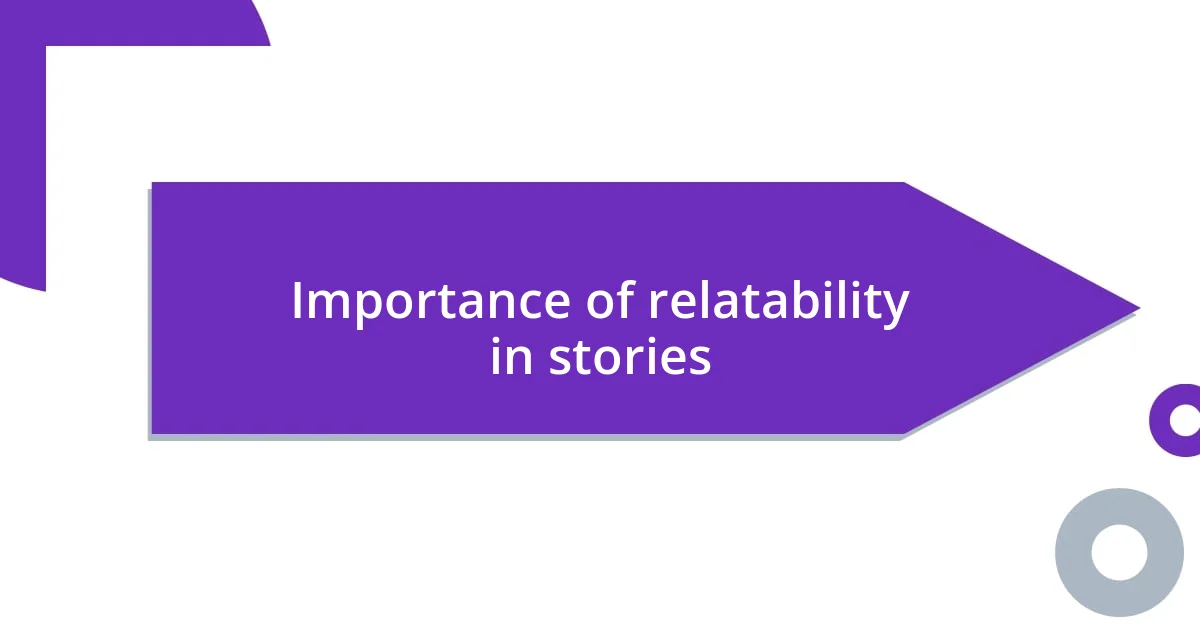Key takeaways:
- Flawed characters enhance relatability, evoking empathy and self-reflection through shared struggles and personal growth.
- Their authenticity, derived from relatable flaws and internal conflicts, fosters a deeper connection with readers, allowing them to see parts of themselves in the characters.
- Writing techniques, such as balancing flaws with strengths and utilizing dialogue, bring characters to life, encouraging readers to engage with the narrative and contemplate their own vulnerabilities.

Understanding flawed characters
Flawed characters are incredibly relatable because they reflect the complexities of real life. I remember feeling a mix of frustration and empathy while reading about a character who consistently sabotaged her own relationships due to her insecurity. It made me wonder, have I ever done something similar? This identification with their struggles makes us reflect on our own flaws, bridging the gap between fiction and reality.
In my experience, flawed characters often evoke a powerful emotional response. There’s something profoundly comforting in seeing a character grapple with uncertainty, much like we do in our lives. For instance, I once connected deeply with a character who struggled with procrastination—her internal battle mirrored my own, especially during those nights when deadlines loomed over me like dark clouds. Doesn’t it touch you when a character’s vulnerability resonates with your own?
The beauty of flawed characters lies in their growth; they often embark on journeys that mirror our own personal development. I vividly recall a story about a character who learned to forgive themselves for past mistakes, which inspired me to confront my own grudges. It begs the question: can we truly grow if we don’t acknowledge our imperfections? Just as those characters evolve, so too can we, and that’s an exhilarating realization.

Importance of relatability in stories
Characters we can relate to serve a critical role in storytelling. They create a connection that allows us to understand their motivations and failures. I once found myself deeply moved by a protagonist who made countless mistakes, yet still desired redemption. Through their story, I learned that recognizing our own imperfections is an essential part of being human—how often do we find ourselves striving for improvement despite our flaws?
Relatable characters often act as mirrors reflecting our inner struggles and aspirations. I remember engaging with a character who juggled a demanding job and personal obligations, leaving them overwhelmed and exhausted. Watching them navigate challenges reminded me of my own experiences as I tried to balance work and personal life. Don’t you think these shared experiences make us feel less alone?
When we see our flaws in characters, it opens the door to deeper self-reflection and growth. I once came across a story where the character’s journey involved facing their anxiety. It inspired me to confront my own quiet fears, prompting me to ask: what does it really mean to overcome our obstacles? This connection not only enriches our reading experience but also encourages us to embrace our personal journeys toward becoming better versions of ourselves.
| Aspect | Relatable Characters |
|---|---|
| Emotional Connection | Create empathy through shared struggles |
| Personal Growth | Encourage self-reflection on our flaws |
| Character Development | Mirror our own journeys |

How flawed characters influence readers
Flawed characters really pull at my heartstrings. I recall a novel featuring a character whose reckless decisions stemmed from a need for acceptance. It tugged at my own memories of seeking approval in ways that weren’t always healthy. This connection allowed me to process my feelings and realize that vulnerability can lead to growth, making their struggles feel like my own. When characters mess up, it reminds us that imperfection is part of the human experience.
- They foster empathy: Readers connect through shared faults and journeys.
- They promote self-reflection: Their flaws spark questions about our own lives and choices.
- They encourage resilience: Watching characters navigate their complexities can inspire us to tackle our own challenges.
There’s also something profoundly reassuring about characters who mess up and try again. Take, for example, a story about a woman perpetually late for everything. Her relentless optimism despite frequent failures resonated with my own struggles with time management. I found myself rooting for her, realizing that her tenacity mirrored my own efforts to improve. This connection not only entertained me but also pushed me to be more forgiving of my own setbacks.

Creating your own relatable flaws
Creating relatable flaws for characters can significantly enhance their authenticity and draw readers in. I’ve often found that when I give a character a seemingly trivial quirk, like an obsession with organizing their bookshelf by color, it not only humanizes them but also reveals deeper insecurities. It makes me wonder: how many of us find comfort in controlling small aspects of our lives when everything else feels chaotic?
As I’ve developed characters, I’ve noticed that their flaws often stem from personal experiences or insecurities, making them more relatable. For instance, a character who procrastinates due to fear of failure resonates with my struggle to overcome perfectionism. It’s like holding up a mirror; it forces me— and hopefully my readers— to confront those uncomfortable parts of ourselves.
Moreover, embracing relatable flaws can often lead to moments of humor and levity. I remember creating a character whose clumsiness resulted in a series of embarrassing moments, yet their ability to laugh it off was endearing. This reminded me that sometimes, it’s okay to not take ourselves too seriously. Isn’t it refreshing to see characters, much like us, stumble and find joy in the journey?

Writing techniques for flawed characters
Developing flawed characters often involves revealing their internal conflicts. I’ve found that delving into a character’s backstory can illuminate why they possess certain flaws. For example, if a character struggles with trust due to a betrayal in their past, this adds layers to their personality. It makes readers ponder: haven’t we all been shaped by our experiences? This tactic not only creates depth but also cultivates empathy, as readers can understand the roots of a character’s imperfections.
Balancing flaws with strengths is another key technique I embrace. A character who is fiercely loyal but prone to jealousy showcases the complexity of human emotions. I recall a character I created who was an amazing friend yet struggled with feelings of inadequacy when comparing herself to others. This duality reflects my own moments of self-doubt, prompting me to ask: what do we gain from recognizing our own strengths despite our flaws? By portraying such complexity, writers help readers relate and reflect on their own multifaceted nature.
Utilizing dialogue effectively can also bring flaws to life. I remember crafting a scene where a character’s sarcastic remarks masked deeper insecurities. The more they joked, the more their hidden vulnerability peeked through. This approach often leads readers to think, how do we use humor to shield ourselves? Engaging readers through these nuances makes the character’s journey more relatable, allowing them to connect on a personal level.

Connecting with readers through flaws
Flaws are the heartbeat of a character’s journey, making them come alive on the page. When I think of my favorite characters, many of them have charming quirks or significant flaws that resonate with my own experiences. For example, the character who can’t help but make sarcastic comments at the worst times reminds me of my own tendency to deflect tension with humor. It’s fascinating how these imperfections, rather than driving us away, often pull us closer to the characters.
I recall a moment in my writing where a character faced a betrayal that made her overly skeptical of those trying to help her. I found myself reflecting on times when I’ve struggled to trust others because of past disappointments. This alignment of experiences emphasizes that our flaws can create unexpected bridges between readers and characters, inviting us to explore our own vulnerabilities. Isn’t it interesting how these shared struggles create a sense of camaraderie, allowing readers to empathize and cheer for the character’s growth?
Moreover, when I introduce a character who is openly flawed yet is striving for change, it resonates deeply with me. I recently wrote about a protagonist with a messy love life, someone who often chose the wrong partners. I couldn’t help but think of my own missteps in relationships. These experiences not only provide a laugh but also spark reflection. It raises the question: how do our own vulnerabilities shape our connections with others? In this way, flaws facilitate a dialogue between characters and readers, making for a story that feels personal and real.














